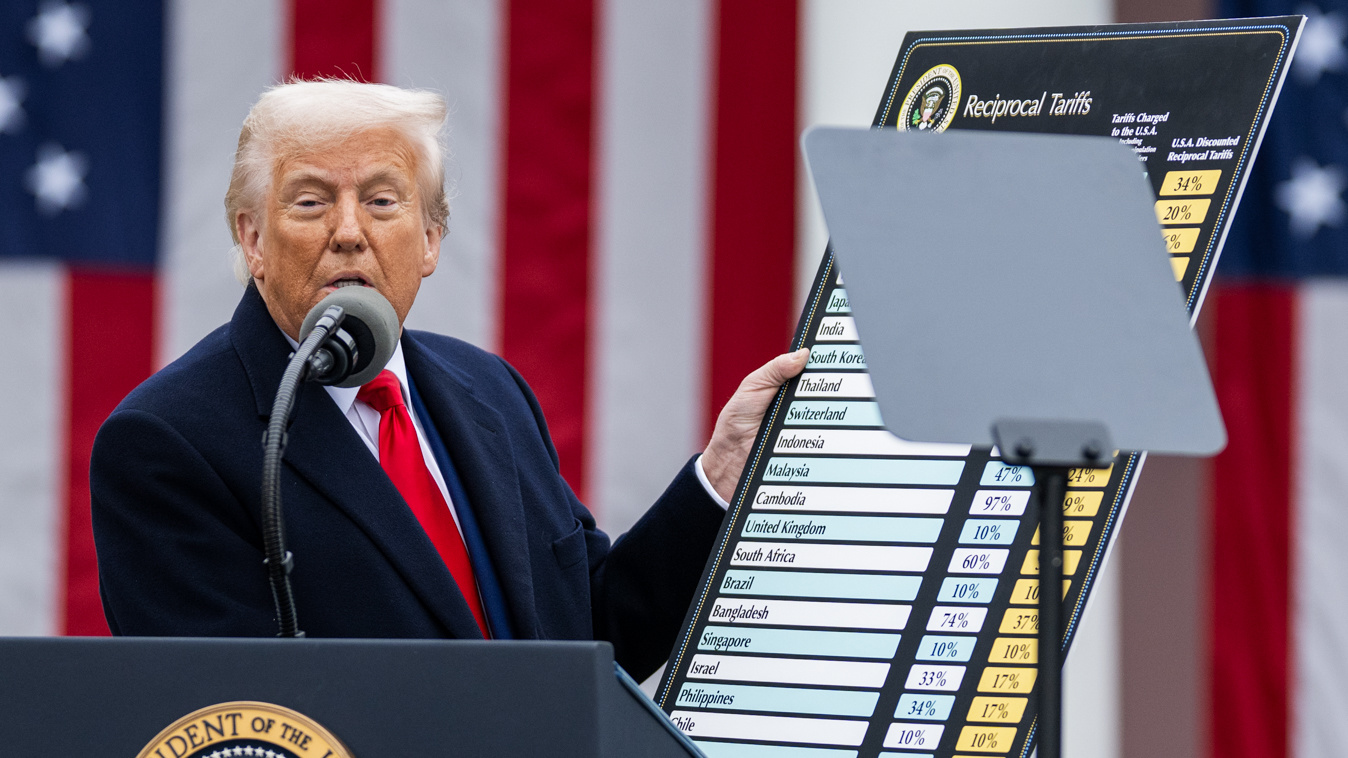With consumer price inflation (CPI) running at 6.8% as of November 2021, many importers are trying to use inflation as an excuse for repealing the tariffs enacted by former President Donald Trump and continued by President Joe Biden. This is special interest pleading and bad economics. A close look at the state of the U.S. economy right now shows the drivers of our current inflation, but trade policy is not one of them.
Here are five reasons why trade policy is not impacting inflation.
- The highest-inflation items driving the CPI are unrelated to trade policy.
In November 2021, consumer price inflation reached 6.8%, its highest annual rate in 29 years. The data from the Bureau of Labor Statistics (BLS) show clearly what is driving these high levels of inflation. The most important contributor is fuel. The price of gasoline was up a stunning 58.1% year-on-year in November. The price of gasoline is driven by world prices in crude oil, which closed out 2021 at $75.33 a barrel, up around 50% from the December 2020 level. Oil prices plunged during the pandemic but rose last year. U.S. trade policies have no significant effect on the price of fossil fuels, where the U.S. is both a large importer and a large exporter.
Food prices are another important driver of our current inflation. The rise in meat prices is attracting attention, with meat and poultry prices up 12.8% year-on-year. These prices are unaffected by U.S. trade policy. The Biden administration is, rightly, considering an investigation of the highly concentrated meatpacking industry to see if there has been any illegal behavior in that industry. The U.S. currently allows meatpackers to import foreign beef and, with only the barest minimum of repackaging, label it as made-in-U.S.A. beef.
Core inflation excludes food and energy and is usually more indicative of underlying trends. If we look at the latest core inflation data, the biggest movers include automobiles. New car prices were up 11.1% in November 2021, while used car prices shot up an eye-watering 31.4%. This is due to the shortage of microchips, which have caused a drastic reduction in the availability of new vehicles, and also prompted automakers to direct the limited number of microchips to the most expensive vehicles, driving up average prices for new and used cars. Instead of trade policy causing the problem it is actually the offshoring of U.S. microchip production over the past 25 years that has put us in this fix and car buyers paid dearly for it in 2021.
- When the Trump tariffs were imposed, consumer inflation hardly budged.
In January 2018, President Trump began to levy tariffs on targeted industrial products, beginning with solar panels and extending to other sectors, and then to a broad array of imports from China. Free traders, importers, economists, and think tanks like the Tax Foundation screamed in horror that these tariffs would be inflationary. If you took their predictions as fact, you would think inflation would soar, goods would become scarce, and the sky was going to fall in on us. None of these predictions came true, however.
In January 2018, U.S. core inflation was running at an annual rate of 1.81% according to BLS data. Fast forward two years. In January 2020, core inflation was…2.26%! Up by less than half a point—which was not surprising because economic growth was strong and the Federal Reserve was actually trying to boost inflation slightly back then.
- The price of many tariffed goods actually declined in 2019.
Economic theory says that the burden of tariffs are never borne completely by either the seller or the importer. That’s in the long term. In the short term, tariffs can and often do have no discernible effect on prices at all. Case in point: prices of goods in the sectors targeted with tariffs in 2018 were actually lower in many cases in 2019 than in 2017. It was only after the pandemic that prices shot up. Take steel. Before the 2018 Trump tariffs, steel prices were around $700 a metric ton for hot-rolled band, one of the most popular forms of steel. The imposition of the tariff in early 2018 caused a short-term burst of panic buying, which subsided by September of that year. In 2019, the price of hot-rolled band averaged just $600, actually lower than the pre-tariff price, in spite of the 25% tariff.
It is a similar story in solar panels. According to federal government figures, the average price of a solar panel in 2017 was 48 cents a watt. Section 201 global tariffs of 30% were imposed in 2018. In 2019 the average price was just 40 cents, a decline of 17%, despite tariffs.
The reasons these prices continued to fall are that there is sufficient competition within the U.S. to keep these markets competitive. In addition, in steel and many other capital-intensive products, there are economies of scale which allow producers to sell at lower prices and still make the same profit because they are running their facilities at higher levels of capacity utilization.
- The current price increases in imported products are due to higher U.S. demand during the pandemic combined with global supply chain snafus.
The pandemic is the most important driver of our current inflation. It suppressed demand in the early months of 2020, but as life returned to semi-normal towards the end of 2020, consumer demand for goods skyrocketed. On top of that, the global supply chain proved wholly inadequate at meeting the demands placed on it by goods-hungry U.S. consumers. Factories in Asia shut down, creating shortages, and container ships stacked up outside ports in the U.S. and Asia.
A third important factor was the additional government spending that the Trump and then Biden administrations used to counteract the pandemic. A year ago, that was wise. But once the economy bounced back in 2021, and shortages and inflation materialized, the deficits added to the inflationary pressure. The Federal Reserve has already announced its counterinflationary plans for interest rates and bond-buying. Last year’s $2.8 trillion budget deficit is on track to fall by about half, a step in the right direction.
Incidentally, the shortage problems are in some cases getting even worse. China recently imposed a lockdown on the city of Xian, reducing production of memory chips, which means the smartphone you want to buy may not be available soon. And smartphone makers will of course do what companies do when a product is scarce: raise the price.
- The best way to insulate the U.S. economy from future shortages and global supply chain snafus is to have a large share of production in every important industrial sector here in the U.S.
Anti-tariff importers, and some members of Congress, are clamoring for the lifting of tariffs to allow an additional flood of imports into the country—that would be on top of our record-setting trade deficit and import figures for 2021. But increased dependence on foreign imports, especially from adversarial nations like China, would just increase the danger of future shortages and unreliability. In many industries, foreign producers produce primarily for their home market and then use open markets like the U.S. to dump any surplus. When shortages emerge, either from increased demand at home or reduced production, a foreign market like the U.S. is the first one they cut off. This was the case last year when India restricted exports of critical medications. Every business person knows you don’t always choose the cheapest supplier. A company needs a reliable, high-quality supplier, and it needs a network of suppliers throughout the most critical supply chains.
The way we achieve that in the U.S. is by using this pandemic-related crisis to rebuild U.S. industry, starting with the most critical industries first. Further, expanding domestic supply reduces inflationary pressure because the economy is able to respond more quickly to any increases in demand, especially in times of national crisis.












